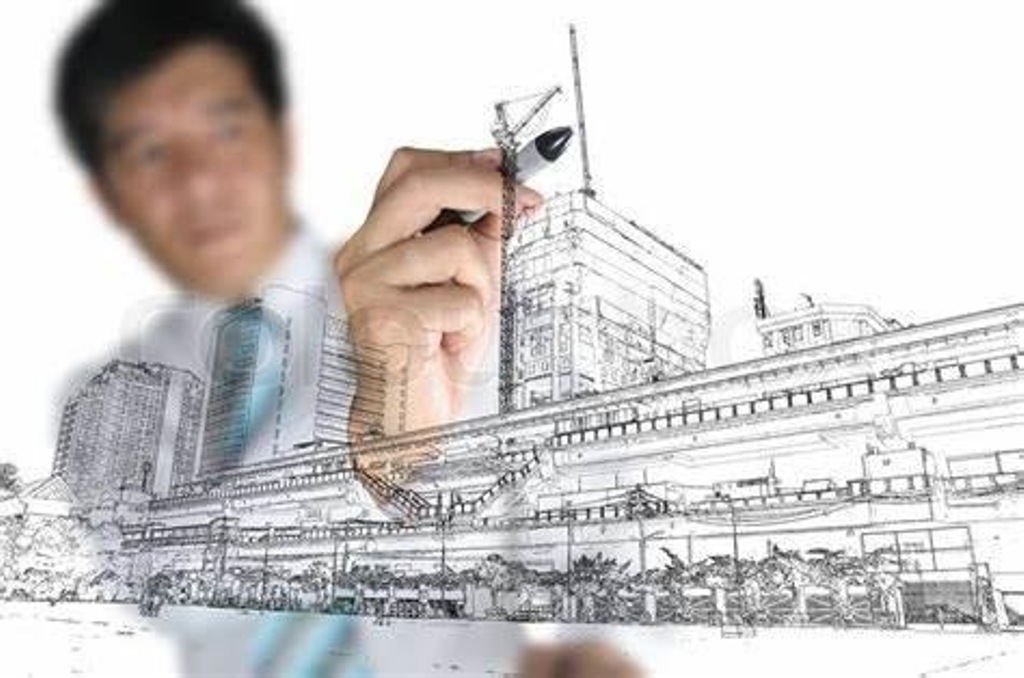The profession of an architect is a noble one. It is one that involves designing detailed plans and designs for the initial phase of any construction work that involves building anything from people’s houses to office parks, schools, museums, government, religious and other varieties of different edifices. It is a combination of both art and science that makes this a specialised profession. The origin of the word ‘architect’ derives from the Latin word ‘architectus’, which is Greek for: arkhi- chief + tekton- builder: Chief-builder. Find out more here.
It is then no wonder that in Europe, both an architect and an engineer are primarily considered to be the same person, often used together and so the practice itself suggests the aptitude to practice the profession without any supervision. Once can do it as an individual, similar to a doctor or a teacher. If there is supervision required, it is usually for an intern in an architectural firm or who works under the architect in learning the ropes.
Even though the actual ‘design’ is the main drive here, architects are also required to have a wide knowledge on a few other areas. For instance, professional architects and designers that work for architectural firms or individually, usually need to know a lot more about related and important subjects, in order to help them with a more holistic approach. They would for instance need to have:
- Technical knowledge
- Environmental knowledge
- Construction Management Knowledge
- Design Management Knowledge
- Business know-how
- Strategic Placement Knowledge
What do they do?

Architects or architect firms are usually given various niche projects to implement from the ideation to the occupancy. They are commissioned to undertake tasks that involve not only the design of the structure but also get involved in the preparation of building audits, construction and analysis reporting, designing the environment surrounding the buildings, designing intricate internal and external structures and the spaces in and around them, to name a few.
In a nut-shell they sit with the client and go through a brief, which is then designed, developed, presented to the client and once implementation stages arrive, they supervise to make sure everything is done as planned. They may hire other specialists to assist in the projects; professionals like engineers – mechanical or structural: https://www.his.com/~pshapiro/architects.html
How many types of architects are there?
There are 7 different known types of architects:

Interior Designers: are professionals who are responsible for designing and styling the interiors of a building, usually an office space or a residential space. Their knowledge is specific to colours, fabrics, space, furniture design and similar practices that enhance the aesthetics of any environment.
Commercial Architect: they are similar to UI/UX designers for websites and web builds i.e. they make sure the customers user experience is of an acceptable standard. So, with commercial architects, for example, if they are responsible for the design of a shopping mall, they make sure the entrance and exits are placed strategically so as to be easily found. They are usually the experts who are knowledgeable on things like safety regulations, building codes and costs.
Green-Design Architects: As the name implies, green-design architects take on the responsibility of designing buildings that are eco-friendly, environmentally sustainable and energy efficient. Their designs revolve around leaving a nominal impact on the environment. In order to do this their knowledge stems from thing like aerodynamics and environmental engineering as well as considerations such as sunshine and shade.
Residential Designers: If you are looking to build a beautifully tailored building in a neighbourhood, look no further than residential designers. Their speciality stems from customising residential property, for example if a client has a personalized design for their house tailored to their needs; architects like Superdraft assist them in making this happen. They would discuss the needs of the client taking into consideration the space, design, functionality and make use of the client’s ideas.
Urban Architect: Incorporate other areas of architecture for instance, green-design, building and landscape design into their portfolio, as well as the environments like from cities, to districts and neighbourhoods including streets and networks thereof. So, all the infrastructure included within the confines of the city are what the jurisdiction of these designers covers.
Industrial Architect: incorporate industrial functionality into their designs. Depending on what type of an industry building is wanted, they design the structures to accommodate the ways in which the buildings can function efficiently.






